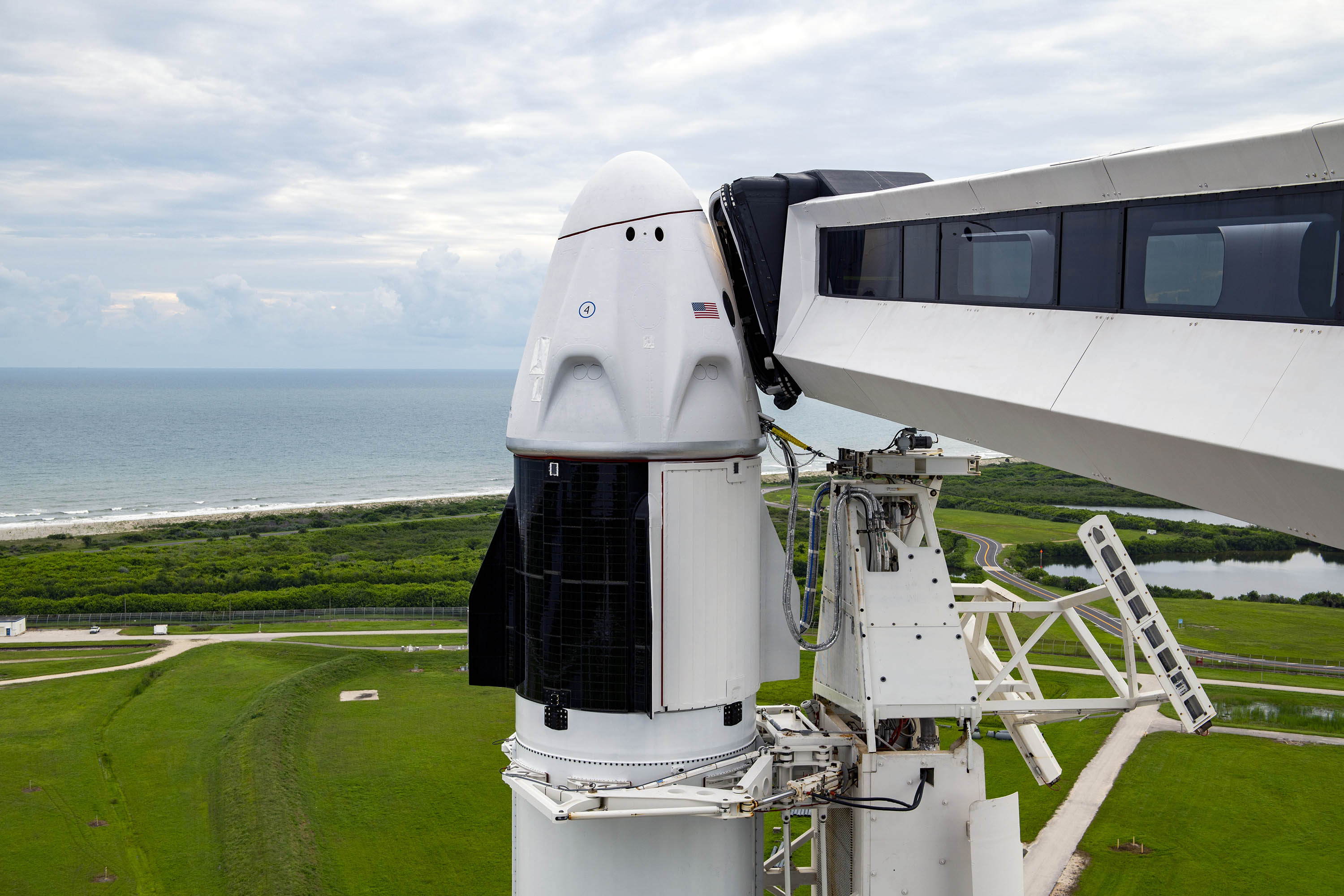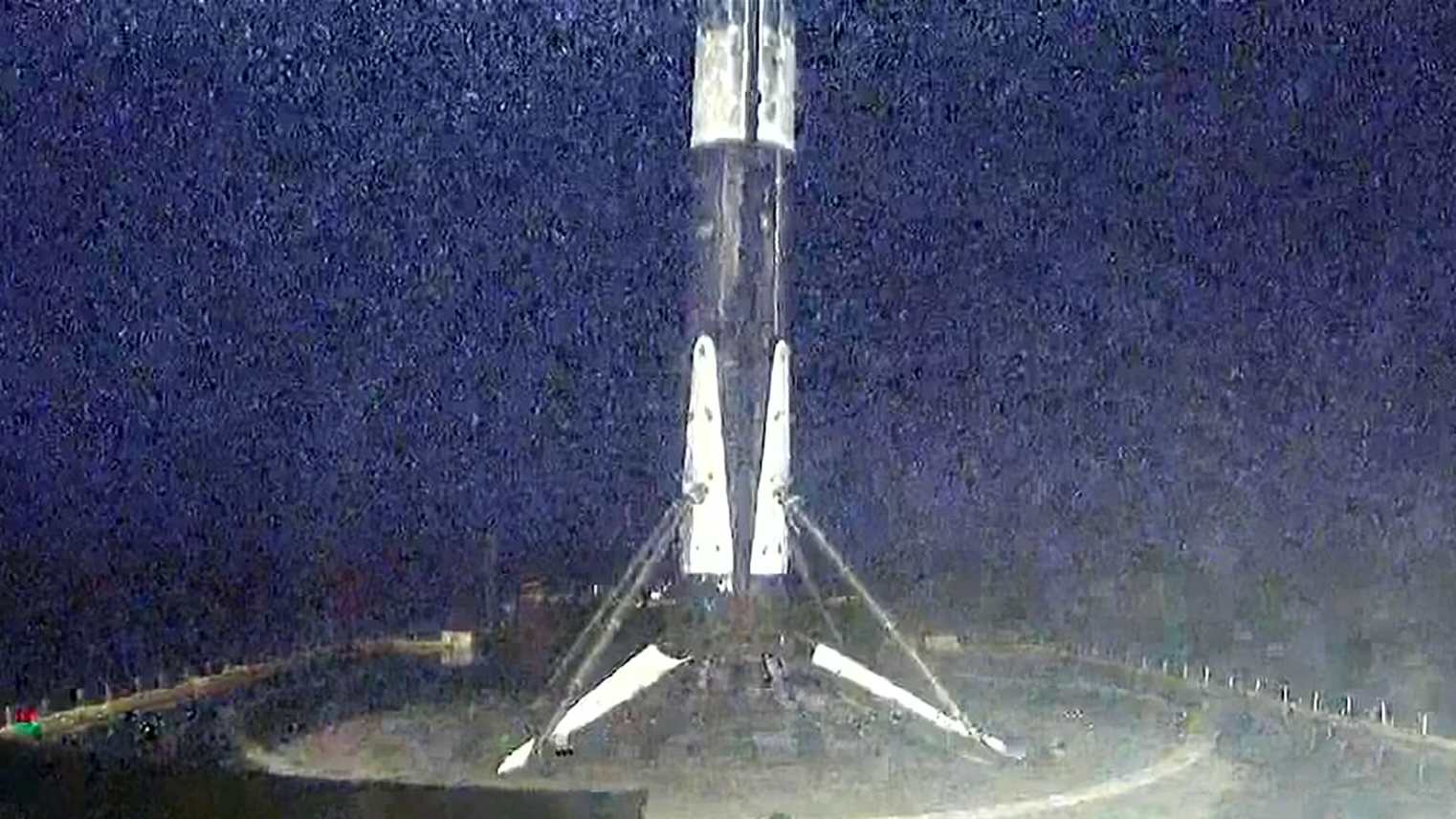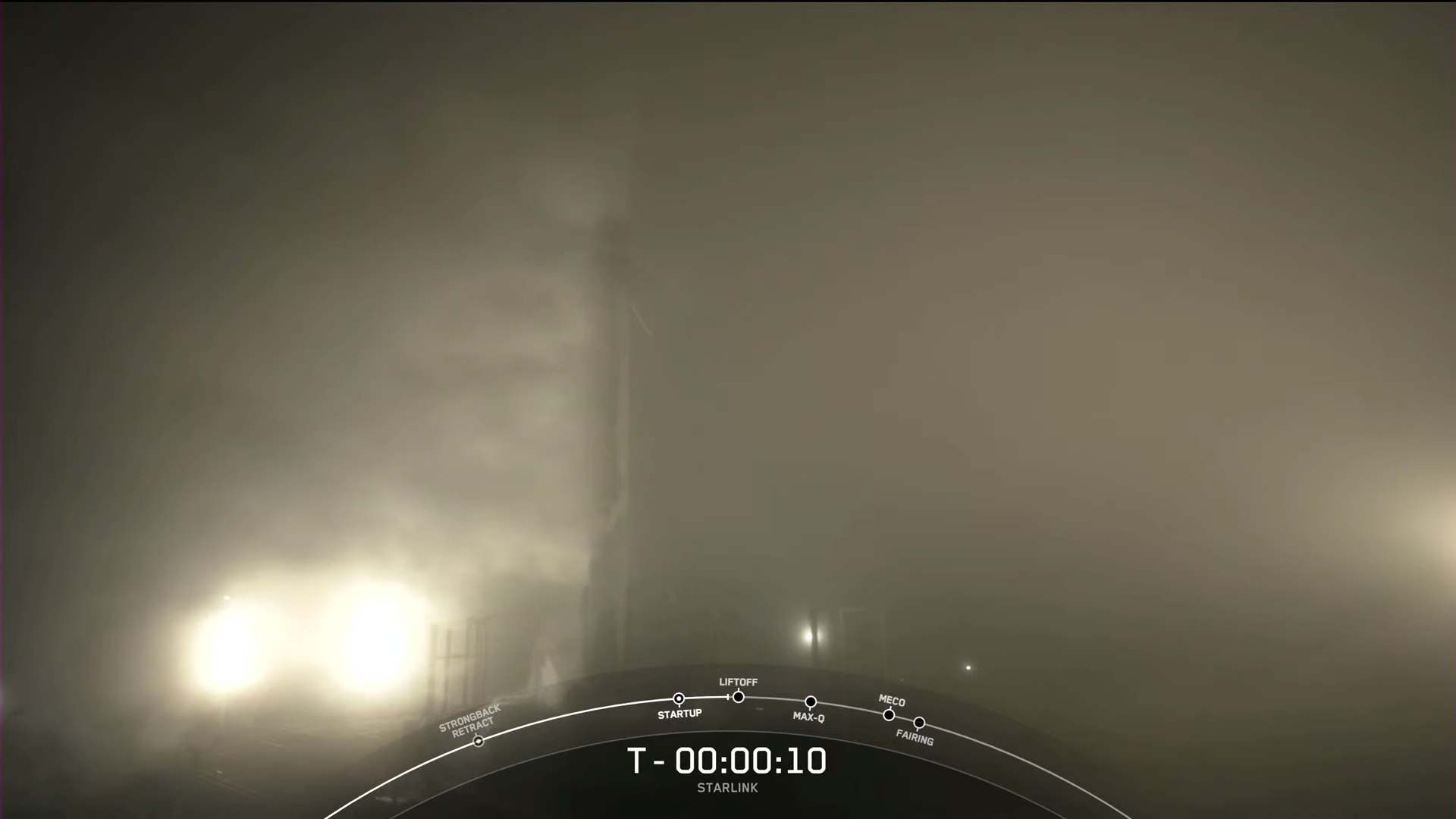SpaceX launches 51 Starlink internet satellites in the constellation's 1st West Coast launch
One of SpaceX's oldest rockets launched on a historic 10th flight, carrying the first stack of Starlink satellites into space in more than two months before sticking a landing at sea to cap the successful mission.
The previously-flown Falcon 9 rocket blasted off from Space Launch Complex 4E at Vandenberg Space Force Station at 11:55 p.m. EDT (8:55 p.m. PDT, or 0355 Sept. 14 GMT), marking the company's 22nd launch of the year. It also marked a record 10th flight for this particular first stage booster.
"What a beautiful view of Falcon 9 as it successfully lifts off from pad 4E at Vandenberg Space Force Base, carrying our stack of 51 Starlink satellites to orbit," SpaceX's Youmei Zhou said during the launch broadcast.
"Stage one landed on our drone ship for the 10th time," Zhou added after the booster touched down, noting it was the company's 90th successful landing to date.
Video: SpaceX launches laser-equipped Starlinks from California, nails landing
Related: SpaceX's Starlink satellite megaconstellation launches in photos
The successful liftoff marked the first time SpaceX launched a batch of operational Starlink satellites on one of its 229-foot-tall (70 meters) workhorse Falcon 9 rockets from its California launch facilities. It's also the first dedicated Starlink flight in more than two months, which was a stark change to the regular cadence set earlier this year as SpaceX launched its own satellites almost weekly.
Approximately nine minutes after liftoff, the rocket's first stage returned to Earth, touching down on SpaceX's drone ship "Of Course I Still Love You" for a 10th successful landing — the second Falcon 9 first stage booster to do so. The massive ship, which was previously stationed in Florida, made the trek through the Panama Canal to support the company's West Coast recovery efforts.
Breaking space news, the latest updates on rocket launches, skywatching events and more!
Vandenberg Space Force base is notorious for its marine layer, which is a heavy shroud of fog that blankets the area and hinders visibility. The phenomenon was evident during the live broadcast as the rocket was barely visible on the launch pad.
A growing constellation
SpaceX's Starlink megaconstellation was created with one major goal in mind: to provide internet coverage to the world. The company is specifically targeting users in remote or rural areas who currently have little-to-no internet connectivity, but users all around the globe will be able to subscribe to the service, the company has said.
At the same time, SpaceX hopes Starlink will serve as a means to fund its deep space ambitions, like its Starship program. To that end, company engineers designed a fleet of flat-paneled broadband satellites to fly over the Earth, beaming down internet coverage to users who can access the service via a compact user terminal.
With Monday's successful launch, SpaceX has lofted 1,791 Starlink satellites into orbit (including the initial test versions), which goes well beyond the company's initial quota of 1,440 satellites. However, the company has official approval for thousands more.
To date, SpaceX has delivered more than 100,000 Starlink internet terminals and the service has been approved to operate in at least 14 different countries, with applications pending in several others.
"With every Starlink launch, we get closer to connecting the world," Zhou said during the launch broadcast.
Starlink review (hands-on): How good is Elon Musk's satellite internet service?
Reusable Falcons
SpaceX has been taking advantage of its fleet of flight-proven boosters, with today's flight marking another major milestone for the company. The flight is the first of the company's recently upgraded Starlink internet satellites, which are now equipped with intra-satellite laser communications.
Typically SpaceX saves its boosters with fewer miles on them for paying customers, opting to reserve the most-flown boosters for its own missions. This way SpaceX can push each booster to its limits, as the company is demonstrating by flying this particular booster for a 10th time.
The booster used in Monday's launch, called B1049, is one of SpaceX's oldest members in its frequent flier's club. The veteran launcher now has 10 launches and landings under its belt as the company continues to push its Falcon 9 rockets to the limit.
This booster made its debut in September 2018 with the launch of a communications satellite, called Telstar 18V for Canada. It then trekked across the country to launch a stack of Iridium NEXT satellites before returning back to Cape Canaveral Space Force Station where it launched seven Starlink missions.
Following a trek across the country from Cape Canaveral to California's Vandenberg Space Force Base, the booster was ready to loft its tenth payload: a full stack of SpaceX's own Starlink satellites, which launched in a polar trajectory in order to service customers in higher latitudes.
This is the 125th overall flight of a Falcon 9 rocket booster, and the 70th reflight of a refurbished one. It's also the first of two different Falcon 9 launches this week.

Perched atop Pad 39A at NASA's Kennedy Space Center sits another veteran Falcon 9 rocket. If all goes as planned, on Wednesday night, that Falcon 9 rocket will carry the first all-civilian crew on a three-day journey around the Earth as part of a mission called Inspiration4.
That mission will feature both a used Falcon 9 rocket and a used Dragon spacecraft. Falcon 9 has really been a workhorse for SpaceX, earning its spot at the most-flown rocket currently in production. With the debut of the souped-up iteration we see today, SpaceX is able to achieve its goal of rapid reusability.
To facilitate reuse, SpaceX tweaked its prime launcher in 2018, adding some slick upgrades — including a more robust thermal protection system, titanium grid fins, and more powerful engines. This version of Falcon 9, known as Block 5, has enabled SpaceX to launch more rockets than ever before.
When it debuted three years ago, SpaceX CEO and founder Elon Musk told reporters that the company expected each Falcon 9 to fly 10 times with few refurbishments in between flights, and as many as 100 times before retirement.
SpaceX first achieved that milestone with another booster — B1051. That launcher was the first to reach 10 flights and is not stopping any time soon. According to Musk, 10 flights is not a hard limit or magic number. As the company continues to refine its refurbishment process, it will continue to push each Falcon to its breaking point, he said.
Now that B1049 has also reached the historic 10-flight mark, the company will have more data to go on.
SpaceX had a banner year in 2020, as the company not only launched the most rockets since it was founded in 2002 but also launched humans into space from U.S. soil for the first time since the end of the space shuttle program in 2011. The key to its success has been its fleet of flight-proven rockets.
The company has no plans of slowing down anytime soon, as it hopes to launch a record 30 rockets in 2021. It is also gearing up for the launch of its fourth crewed mission, which will blast off Wednesday evening (Sept. 15), carrying Jared Isaacman, Hayley Arceneaux, Sian Proctor and Chris Sembroski into space for a three-day orbital trip. The Inspiration4 mission is part of a fundraising effort to raise millions for St. Jude Children's Research Hospital and is set to launch during a five-hour window that opens at 8:02 p.m. EDT (0002 GMT).
When the first stage booster returns to port, it will sail into the Port of Long Beach, marking the third different port this particular booster has returned to after delivering its payload into orbit. (The other two being Port Canaveral and the Port of Los Angeles, which is where SpaceX previously based its West Coast operations.)
In addition to recovering the Falcon's first stage, SpaceX will also recover the rocket's payload fairing or nose cone. The clamshell-like hardware is designed to protect the payload as it climbs through the atmosphere and then jettisons once the rocket reaches a certain altitude. With each half worth an estimated $3 million, the company can really reduce costs by refurbishing the fairings and flying them again.
In fact, each of the fairing pieces used in this mission has flown before multiple times. Equipped with navigation software and parachutes, the fairings will gently splash down in the Pacific Ocean where they will be retrieved by a ship called NRC Quest, one of SpaceX's recovery vessels. With any luck, they will fly again soon.
Follow Amy Thompson on Twitter @astrogingersnap. Follow us on Twitter @Spacedotcom or Facebook.

Amy Thompson is a Florida-based space and science journalist, who joined Space.com as a contributing writer in 2015. She's passionate about all things space and is a huge science and science-fiction geek. Star Wars is her favorite fandom, with that sassy little droid, R2D2 being her favorite. She studied science at the University of Florida, earning a degree in microbiology. Her work has also been published in Newsweek, VICE, Smithsonian, and many more. Now she chases rockets, writing about launches, commercial space, space station science, and everything in between.


